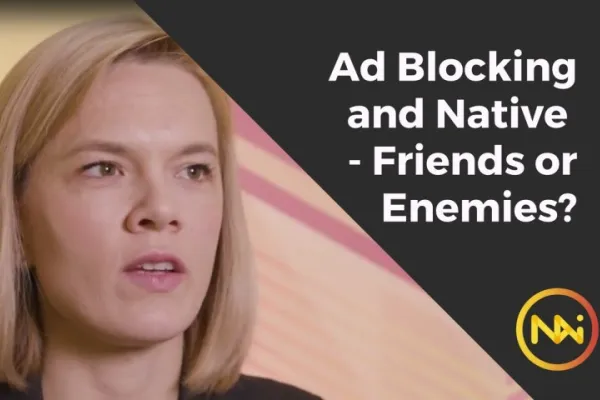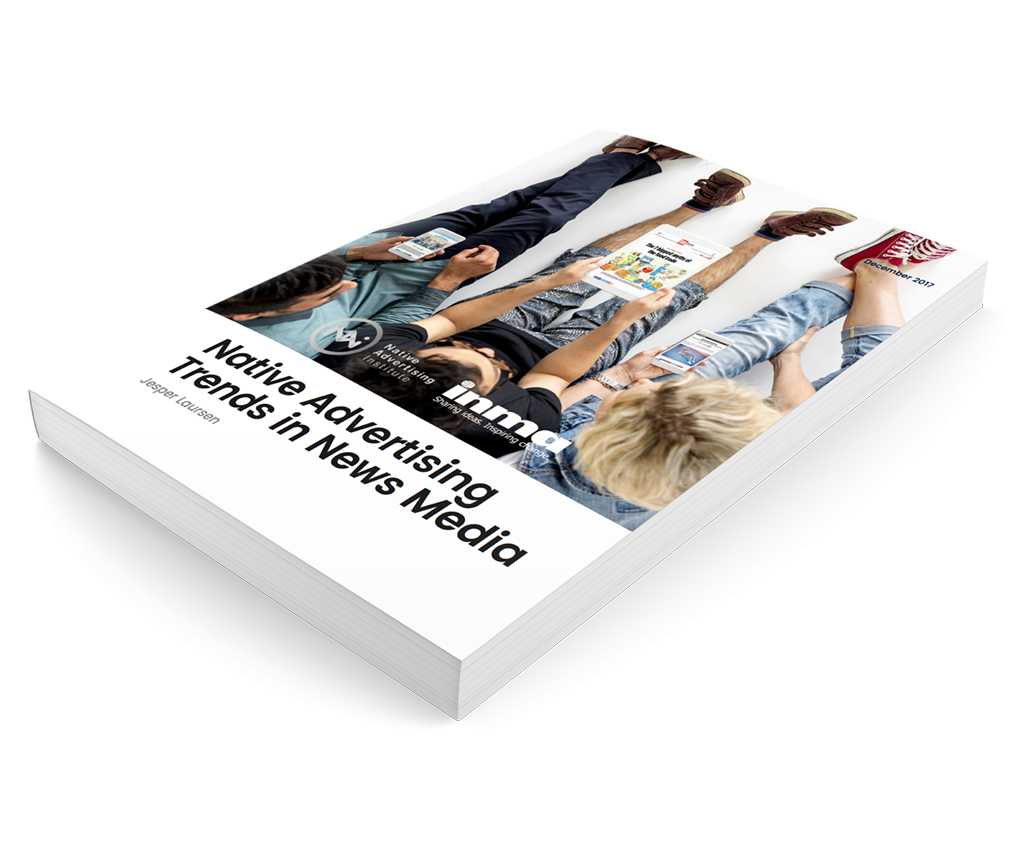
 Details
Details
"I think the web would be better with no advertising at all, I believe the world would be better with no advertising at all," says Laura Sophie Dornheim, Head of Communication at Eyeo - the company behind Adblock Plus.
We interviewed her when she attended Native Advertising DAYS 2017 and asked her how ad blocking can possibly be a helpful part of the advertising ecosystem -- and where native advertising fits into a world of consumers who use Adblock Plus.
Below are highlights from the interview which have been slightly edited for clarity.
Instead of finding ways to circumvent ad blocking technology and forcing your adds on users, you should think about other ways to reach them.
The ad blockers are your audiences
I think advertisers definitely should pay attention to why people use Adblockers. A lot of people online use ad blockers.
And if you look at the demographics, these people are usually the ones that are younger, that are more tech-savvy, that have a higher household income, that have higher degrees. So these are the ones you usually want to reach with your ads, but they are blocking them.
RELATED: Native Advertising Is Not the Same as PPC and Display
Therefore, instead of finding ways to circumvent ad blocking technology and forcing your adds on users, you should think about other ways to reach them.
With Acceptable Ads (which allows advertisers and publishers who have agreed to make ads that abide by user-generated criteria to be whitelisted, red.) we have a tool that reaches these people because it is proven to work for them. But of course, native advertising can also be a valuable tool to really reach that audience in a non-annoying way that really brings value.
I think the rise of ad blocking should really be a wake-up call to advertisers that something has to change.
We get asked a lot, how adblocking can possibly help the advertising ecosystem. Of course, the first impression is it's completely black and white.
Ad blocking helping the ecosystem?
We get asked a lot, how adblocking can possibly help the advertising ecosystem. Of course, the first impression is it's completely black and white. On the one side are the advertisers, on the other side, are the ad blockers.
Adblock Plus is actually the one blocker that tries to facilitate a compromise. Because we know that if all ads are gone, a lot of quality content will disappear and we don't want that to happen. So we thought about a middle way and we've learned a lot from our users.
RELATED: In a Few Years, Native Will Be the Standard of Advertising
By default, if you have Adblock Plus, acceptable ads is activated. Less than 10% of our users opt out of that. So for more than 90%, Acceptable Ads are okay. These are the people that make the effort to install an ad block because they're so annoyed with ads, so that's clear proof that there is a middle ground.
I see a lot in common between native advertising and Acceptable Ads
Native advertising should bring value to all
My thoughts on native advertising and whether it's rather bad or good are quite clear. It is a good development. Actually, I see a lot in common between native advertising and Acceptable Ads or other initiatives that try to make online advertising better.
We all have understood that the pop-up that covers your whole screen and is in-your-face is over. It's the past. We should not do that anymore.
For me, good native advertising is advertising that really brings value to all parties involved. The user, the publisher and the advertiser. They all have a little bit of different interest but they all should be satisfied, otherwise, it's not a good advertising.
RELATED: The Standard for Native Ads are Almost Higher Than for Journalism
From an ad blocking perspective, we have very clear criteria. Adblock Plus has Acceptable Ads implemented and there are certain criteria in form and format, in size, and in labelling, which very important, especially for native advertising. It has to be clearly label, clearly distinguished as an ad. But then, we allow these ads to be whitelisted, to be shown to users that otherwise will block most ads.
Of course, there are lots of lessons to be learned for the advertising industry, because we didn't just come up with this criteria. We took them from a very extensive user research. Here, the users told us that okay, if I see a small placement there, if it's very clearly labelled if it doesn't completely interrupt my flow, then I might be fine with it.
And of course, especially for native advertising that is not a big "buy me now!" in the middle of a text, I'm just reading, but maybe a similar article -- ideally content that also adds value by itself. These criteria can apply, and then we can work together to bring good native content -- even to the people that would usually block ads.
The other option would be working together to make sure that native advertising always adheres to Acceptable Ad standards and thus will not fall in a category where it's automatically blocked.
Working together to keep native acceptable
The future of ad blocking is very bright.
We still see members rising, ad blocking at mobile is almost standard in Asian countries and it will soon be the same in Western countries, The U.S and Europe.
Ad blocking can certainly have an impact on native advertising and vice versa, so there are a lot of opportunities
and then there are some risks.
When native becomes too aggressive, becomes annoying to users, then ad blockers will find a way to also block that advertising.
The other option would be working together to make sure that native advertising always adheres to Acceptable Ad standards and thus will not fall into a category where it's automatically blocked.



